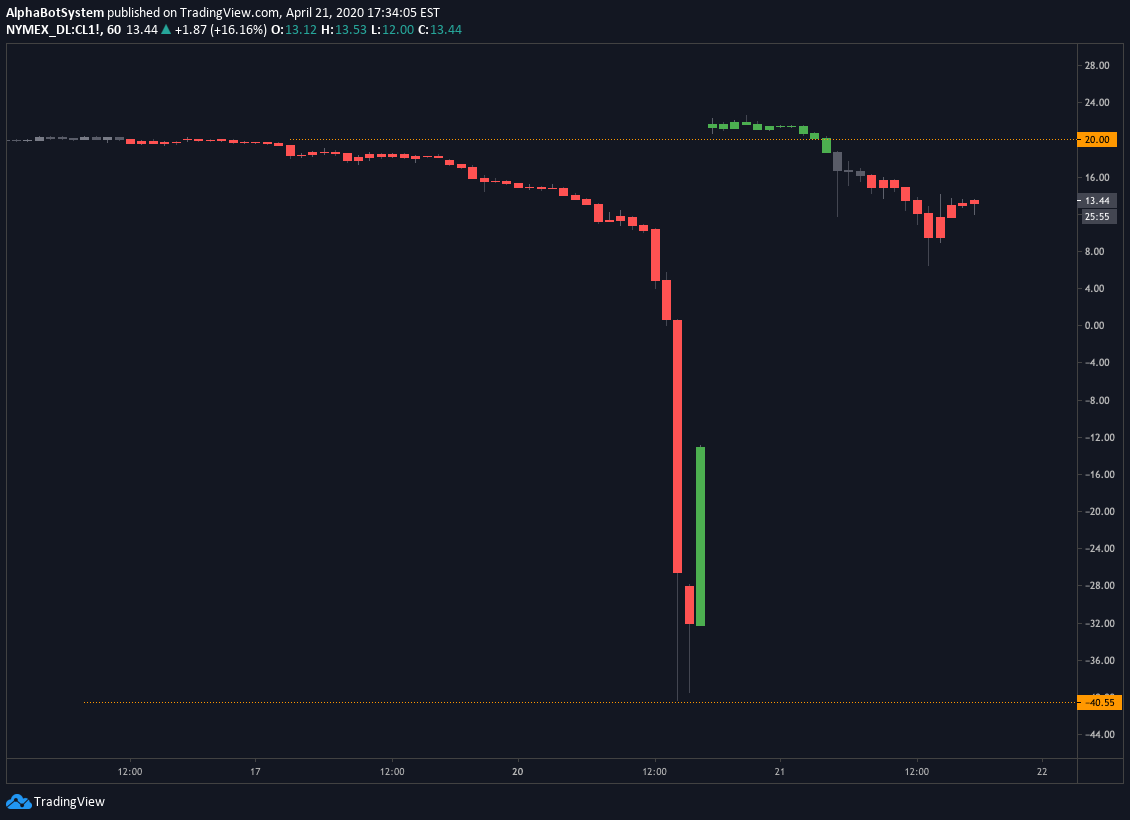Why Oil Prices Went Negative

Oil prices went negative on April 20th, 2020. This essentially translated to oil producers paying buyers to take oil. This was the result of a lack of demand for oil causing a lack of storage / a fear of a lack of storage.[1][2][3]
It costs money to store oil no one wants, and thus the negative price represented an incentive for buyers to buy and store oil.
Further, this excess of supply was arguably a result of oil production not slowing down while COVID-19 slowed down the world economy, especially with respect to the demand for manufacturing and transportation.
Understanding The Oil Price Chart: As you can see in the chart above, prices for the expiring May contract for Light and Sweet Crude Oil futures reached -$40 (negative $40). That means one barrel of Light and Sweet was effectively costing a seller $40 to sell. Within the span of a few days, the price went from about $20, to -$40, and back to $20 before moving lower again.
FACT: Although stocks can’t go negative, futures contracts and the price of commodities like oil can. A negative price just represents a situation in which the seller pays the buyer to take the commodity. The actual negative price is the current price being paid, the futures price is a price agreed to be paid by a certain “expiration” date.
